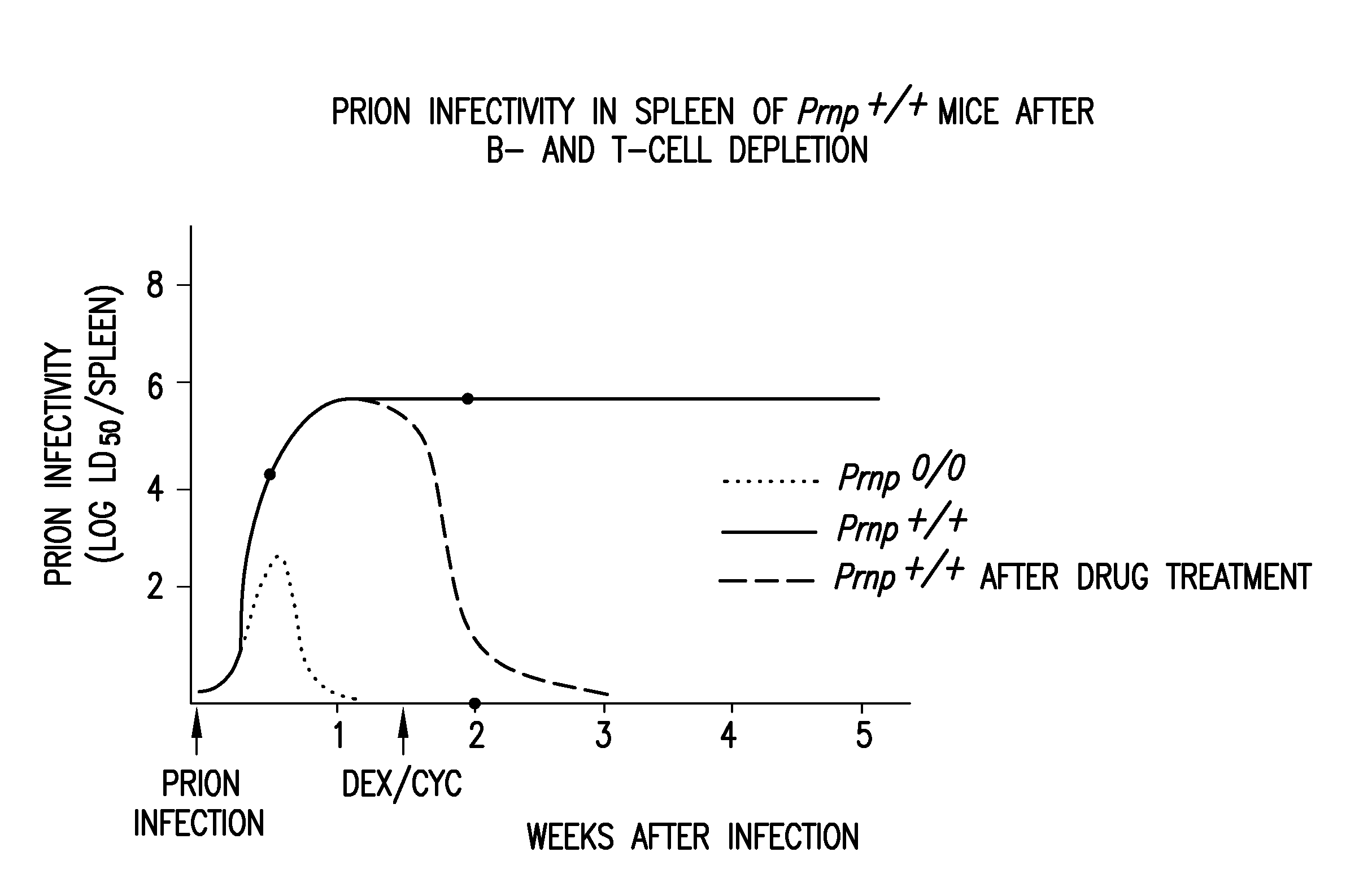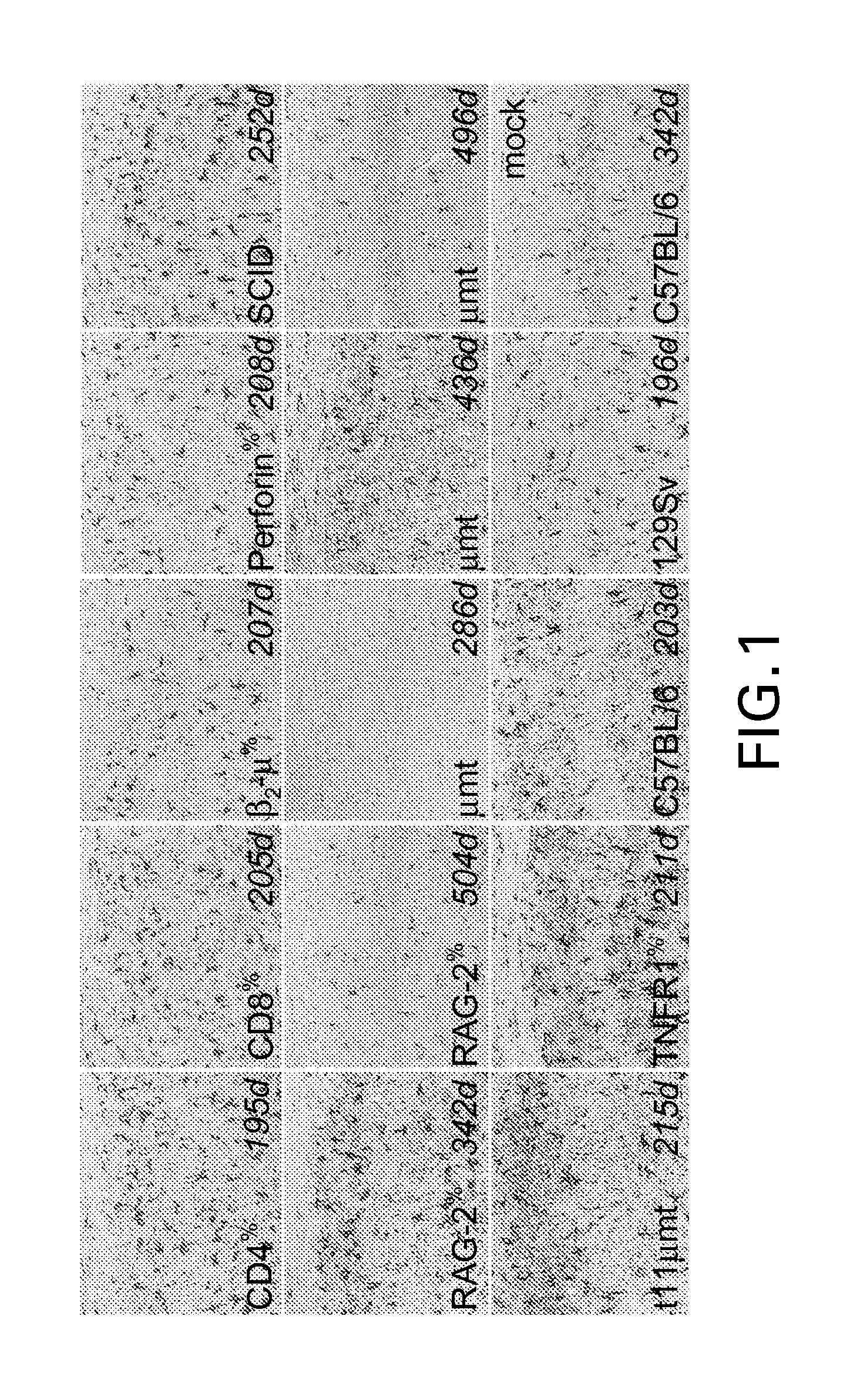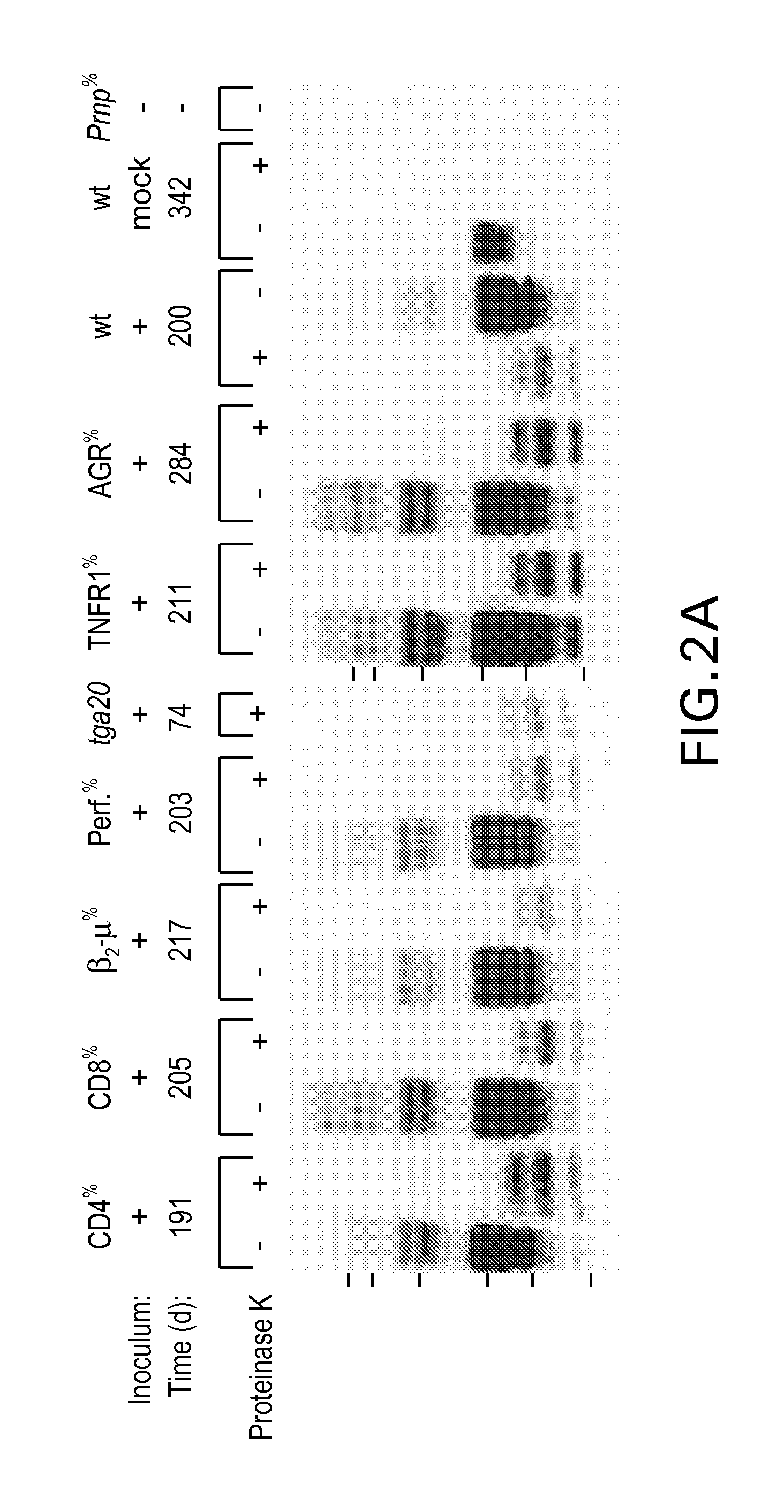Diagnostics And Therapeutics For Transmissible Spongiform Encephalopathy And Methods For The Manufacture Of Non-Infective Blood Products And Tissued Derived Products
a technology of transmissible spongiform encephalopathy and non-infective body fluid, which is applied in the direction of antibody medical ingredients, animal cells, peptide/protein ingredients, etc., can solve the problems of epidemic proportions, difficulty in diagnosing and treating them effectively, and dairy cattle in particular at the highest measurable risk
- Summary
- Abstract
- Description
- Claims
- Application Information
AI Technical Summary
Benefits of technology
Problems solved by technology
Method used
Image
Examples
example 1
Generation of t11 μMT Mice
[0193] The V-gene segment of the immunoglobulin heavy chain of the B-cell hybridoma VI41 (ref. 27) secreting a VSV-neutralizing antibody was cloned into an expression vector encoding the mouse β-chain of allotype a. Transgenic mice were generated and backcrossed to μMT mice. t11 μMT mice exclusively expressed the transgenic β-chain of the allotype a; endogenous IgM of the allotype b and immunoglobulins of other subclasses were not detected in their serum (not shown).
example 2
2.1. Scrapie Inoculation
[0194] Mice were inoculated with a 1% homogenate of heat and sarcosyl-treated brain prepared from mice infected with the Rocky Mountain laboratory (RML) scrapie strain. Thirty microliters were used for intra-cranial (i.c.) injection, whereas 100 μl were administered by intra-peritoneal (i.p.) route. Mice were monitored every second day, and scrapie was diagnosed according to standard clinical criteria.
2.2. Western-Blot Analysis
[0195] Ten percent brain homogenates were prepared as described 1 and, where indicated, digested with 20 μg / ml of proteinase K for 30 minutes at 37° C. Eighty μg of total protein were then electrophoresed through 12% SDS-polyacrylamide gel, transferred to nitrocellulose membranes, probed with monoclonal antibody 6H4. (Prionics AG, Zurich) or polyclonal antiserum IB3 (reference 26) against mouse PrP, and developed by enhanced chemiluminescence.
2.3. Detection of PrP Antibodies
[0196] Brain Lysates from wild-type and Prnpo / o mice, as w...
example 3
FACS Analysis Shown in FIG. 2D
[0210] Peripheral blood cells were incubated with serum from t11 μMT mice, washed, incubated with anti-mouse IgM-FITC conjugate followed by anti-CD3-PE (Pharmingen), and analyzed with a Becton-Dickinson FAScan instrument after erythrocyte lysis and fixation. For analysis, cells were gated on CD3-positive T-cells. EL4 cells infected with vesicular stomatitis virus (VSV) were stained with 5 μg VSV-specific monoclonal antibody VI24 (ref. 27) and with FTC-labelled antibody to mouse IgG2a (Southern Biotechnology), or with serum of t11 μMT mice, and with FITC-labelled F(ab′)2 antibody to mouse IgM (anti-IgM-FITC, Tago), or with serum of C57BL / 6 mice and anti-IgM-FITC. All data acquisition and analysis were performed with CellQuest software (Becton Dickinson).
PUM
| Property | Measurement | Unit |
|---|---|---|
| resistance | aaaaa | aaaaa |
| temperatures | aaaaa | aaaaa |
| Resistance | aaaaa | aaaaa |
Abstract
Description
Claims
Application Information
 Login to View More
Login to View More - R&D
- Intellectual Property
- Life Sciences
- Materials
- Tech Scout
- Unparalleled Data Quality
- Higher Quality Content
- 60% Fewer Hallucinations
Browse by: Latest US Patents, China's latest patents, Technical Efficacy Thesaurus, Application Domain, Technology Topic, Popular Technical Reports.
© 2025 PatSnap. All rights reserved.Legal|Privacy policy|Modern Slavery Act Transparency Statement|Sitemap|About US| Contact US: help@patsnap.com



